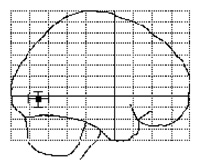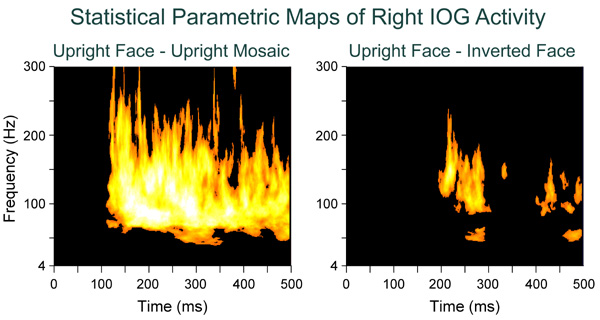SATO Wataru Laboratory
Rapid, high-frequency, and theta-coupled gamma oscillations in the inferior occipital gyrus during face processing
(Sato*, Kochiyama*, Uono, Matsuda, Usui, Inoue, & Toichi (* equal contributors): Cortex)
Neuroimaging studies have found greater activation in the inferior occipital gyrus (IOG), or occipital face area, in response to faces relative to non-facial stimuli.
However, the temporal, frequency, and functional profiles of IOG activity during face processing remain unclear.
Here, this issue was investigated by recording intracranial field potentials in the IOG during the presentation of faces, mosaics, and houses in upright and inverted orientations.

Time-frequency statistical parametric mapping analyses revealed greater gamma-band activation in the IOG beginning at 110 ms and covering 40-300 Hz in response to upright faces relative to upright houses and mosaics.
Phase-amplitude cross-frequency coupling analyses revealed more evident theta-gamma couplings at 115-256 ms during the processing of upright faces as compared with that of upright houses and mosaics.
Comparable gamma-band activity was observed during the processing of inverted and upright faces at about 100-200 ms, but weaker activity and different coupling with theta-band activity after 200 ms.
These patterns of activity were more evident in the right than in the left IOG.

These results, together with other evidence on neural communication, suggest that broadband gamma oscillations in the right IOG conduct rapid and multistage (i.e., both featural and configural) face processing in collaboration with theta oscillations transmitted from other brain regions.
Return to
Recent Research.
Return to
Main Menu.

